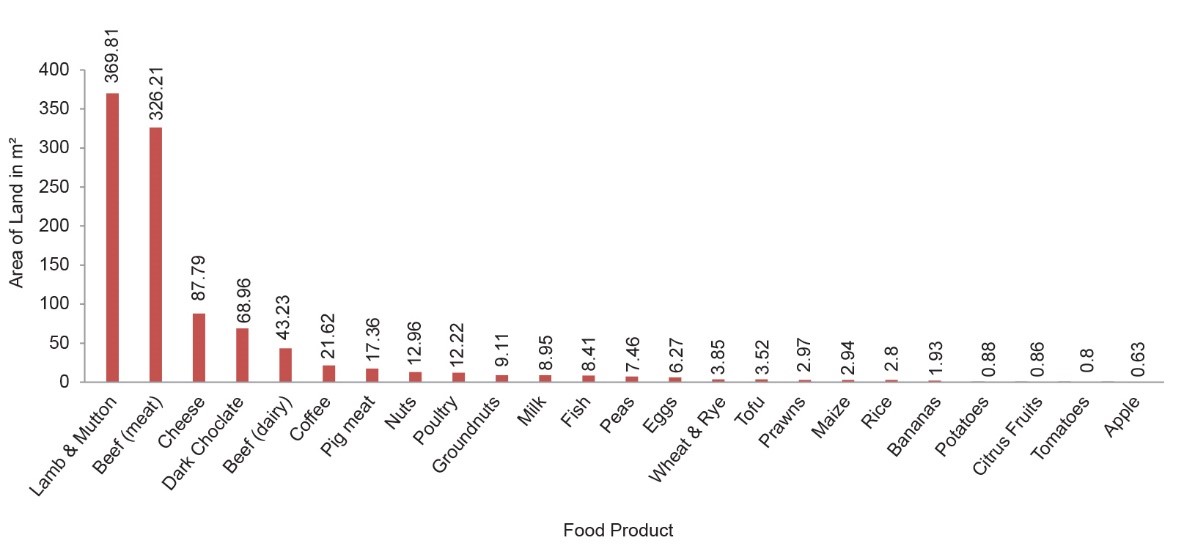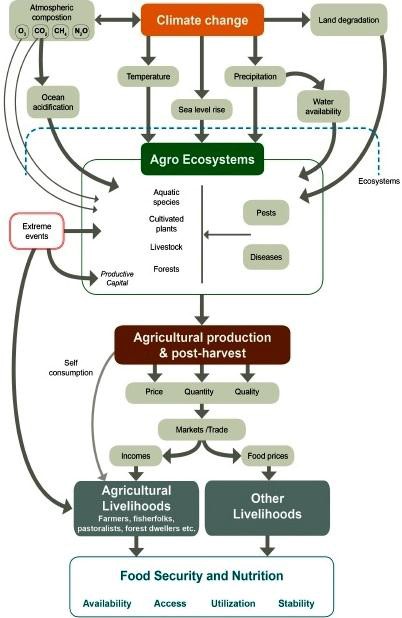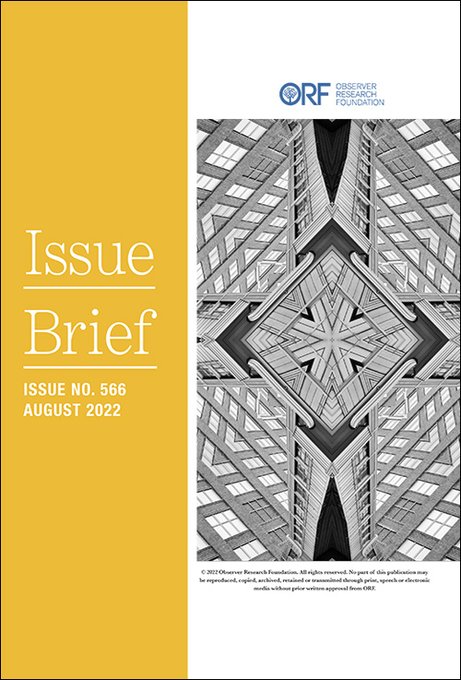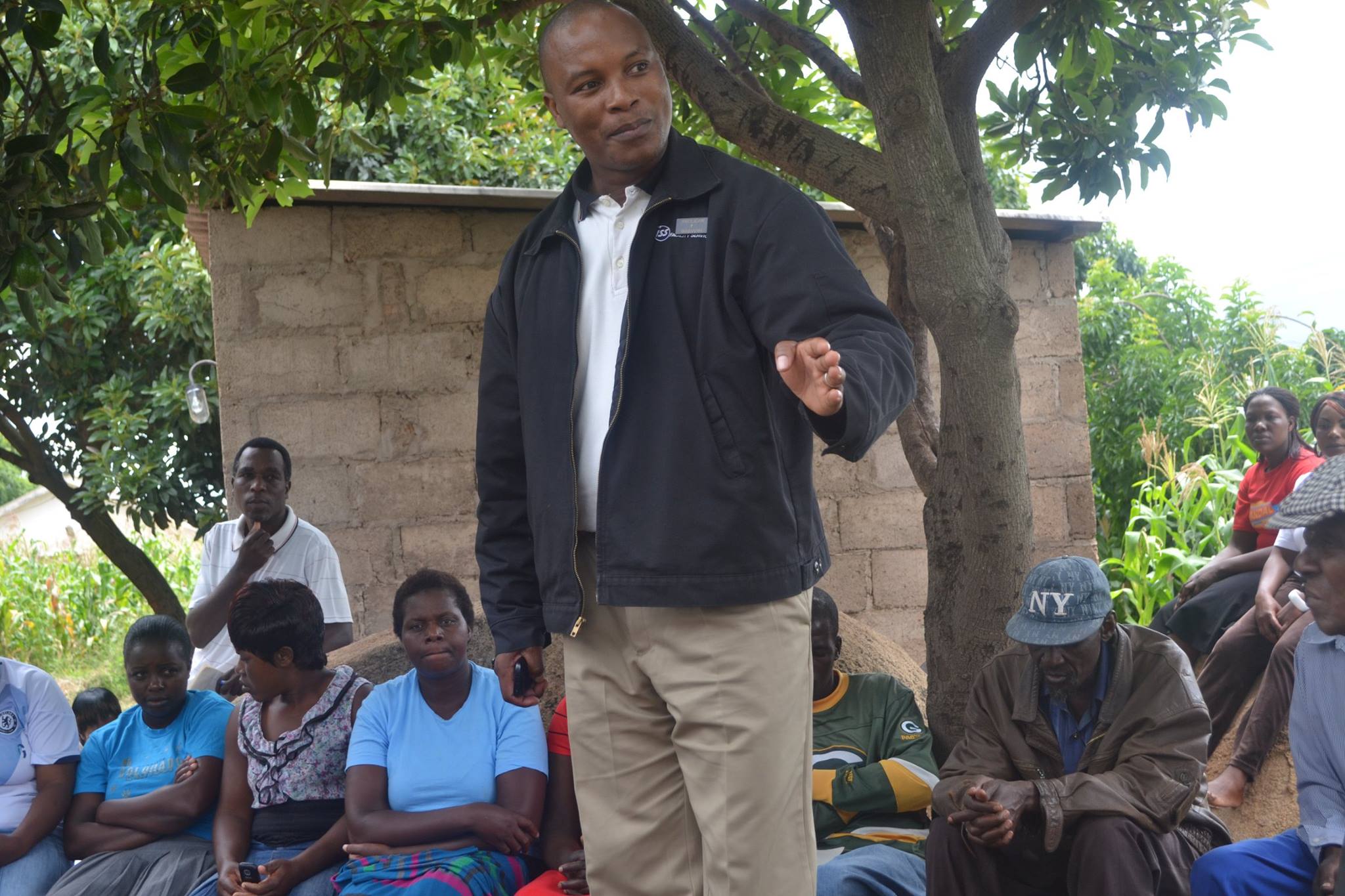|
Getting your Trinity Audio player ready...
|
‘Global syndemics’ are pandemics that intersect with climate change, undernutrition, and obesity—posing a grave threat to human and planetary health. The global community could today be sitting amidst a syndemic. With the world’s population expected to reach 9.1 billion by 2050, the demand for food would exponentially grow, increasing the requirement for land for agricultural purposes, grazing land for livestock, and fertilisers, and genetically modified crops. These heightened activities will have an impact on the health of the global environment.
At the same time, despite the increased agricultural activity, in 2020, nearly 811 million people faced hunger across the world and undernourishment rose by 9.9 percent. Overall, the world has made little progress in ensuring access to safe, nutritious, and sufficient food for all. Conflict, climate variability, extreme weather events, and economic slowdowns are the most crucial obstacles to progress, especially in regions where inequality is high. The prolonged COVID-19 pandemic has made the gaps wider.
This brief offers evidence of the role played by current agricultural production systems in worsening climate change and argues for a reorientation towards climate-smart agriculture. The brief outlines the environmental impacts of agriculture, food systems, and the modern diet; explores the intersection of climate change and global food security; underlines the pillars of a sustainable food system; and makes a case for climate-resilient agriculture.
The Environmental Impacts of Agriculture, Food Systems, and the Modern Diet
Over one billion people are nourished by farming system comprising cultivation, production, processing, transport, packaging, storage, and retail. Some one thousand years ago, there were only 4 million sq km of arable land used for farming, or 4 percent of the world’s land area.[1] Today, agriculture occupies half of all habitable land.[2]
To feed the world’s growing population, more than 30 percent of food supply per capita has increased since 1961; the use of nitrogen fertilisers has risen by 800 percent; and 100-percent more water is utilised for irrigation. Yet, despite this exponential increase, current food production could still not solve the hunger problem. Moreover, diet-related non-communicable diseases continue to pose grave health threats across the globe.
Indeed, food systems are failing to meet both health and environmental goals. Approximately 2.5 billion people are malnourished in the world—around 800 million people are undernourished, 2 billion adults are overweight or obese, and over 2 billion people are micronutrient-deficient.[3] The lack of nutritious foods and poor eating habits are the leading cause of morbidity and mortality around the globe. Advanced agricultural methods are also threatening the health of the planet as the sector accounts for 16-27 percent of global greenhouse gas (GHG) emissions[4] and contributes to freshwater pollution, soil degradation, and biodiversity loss.
In the 21st century, therefore, aligning food systems to achieve better environmental and health outcomes ranks among humanity’s most important challenges.
Human activities and a warming world
Humans depend on the land for their livelihoods and well-being, including their supply of food, freshwater, and various other ecosystem services.
Nearly 70 percent of the ice-free land surface on earth is directly affected[5] by human activity. Land is key in the exchange of energy, water, and aerosols between the land surface and the atmosphere, where it acts as both a source and sink of GHGs. Climate change and extreme weather events are affecting land ecosystems and biodiversity to varying degrees. Since 1961, the supply of vegetable oils and meat per capita has more than doubled, and the supply of food calories per capita has risen by about one-third. Approximately 25-30 percent of the total food produced is wasted today. This results in increased greenhouse gas emissions.
Poore and Nemecek (2018)[6] have illustrated the land footprints of different foods, measured in meters squared (m2) per kilogram (see Figure 1).

Food waste and GHG emissions
Food wastage arises from a variety of sources and depends on the local conditions in each country. A pattern is discernible: in high-income countries, food losses occur in the production and post-harvest phases due to aesthetic preferences and arbitrary sell-by dates; in low-income countries, meanwhile, food losses take place during processing, distribution, and consumption. Combined with unfavourable climatic conditions, the lack of infrastructure, and inadequate knowledge of proper food storage and handling lead to food spoilage in low-income countries. According to the Food and Agriculture Organization (FAO),[8] the food waste footprint on natural resources is around 4.4 billion tonnes of carbon dioxide equivalent per year. If food wastage were made the equivalent of a country, it would be the third largest emitter in the world (see Figure 2). FAO has also noted that although the highest amount of food is wasted during the consumption phase (37 percent of total), consumption is only responsible for 22 percent of total food wastage. In other words, waste food that is further along the supply chain has a higher carbon intensity than waste food earlier in the chain.
Figure 2: GHG Emissions in 2011: Top 20 Countries vs. Food Wastage

The trilemma: Diet, health, and environment
The trilemma in global nutrition connotes that diet,[10] health, and the environment are closely intertwined, and choosing one or two sacrifices the others. An increase in global diabetes prevalence of 80 percent and in nitrogen fertiliser use by 860 percent can be attributed to diet-related health and environmental impacts. Additionally, current dietary trends are accountable for three-fourths of the global burden of disease and a large increase in the environmental impacts of diet-related diseases. Modern western diets are low in healthy food such as fruits, legumes, vegetables, whole grains, nuts, and seeds, and high in processed red meat, fast food, and sugary drinks. Such diets—dominated by low-cost, highly processed foods—cause changes in the agricultural sector, in turn increasing the incidence of metabolic and nutritional diseases and GHG emissions. Mejia et al. (2018) have reported[11] that sugar consumption has tripled globally over the past five decades. At the same time, the production of sweeteners and oils—two main ingredients of unhealthy diets—has risen, too. Sugarcane production has increased by 294 percent, and corn production, by 310 percent. To produce popular commodities such as sweeteners and oils, huge amounts of energy must be consumed (mostly by burning fossil fuels), resulting in carbon dioxide (CO2) and methane emissions.
Climate Change and Global Food Insecurity
Participants in the 1996 World Food Summit[12] agreed: “Food security exists when all people, at all times, have physical and economic access to adequate, safe, and nutritious food in quantities and varieties that meet their dietary needs and food preferences.” The accepted definition of food security[13] lists its four components thus: availability of food; accessibility of food; proper assimilation of food into the human body; and stability of these three components. However, food security continues to be poor. There were 836 million people living in extreme poverty at the end of the 15-year cycle of the Millennium Development Goals in 2015.[14] Nearly 800 million people lack access to a nutritious diet in the right quantity and quality every day.[15] Climate change increases the risk of food insecurity in the most vulnerable countries and populations by affecting livelihoods and incomes in rural areas, marine and coastal ecosystems, and terrestrial and inland ecosystems.
Figure 3: The Cascading Effects of Climate Change on Food Security and Nutrition

Sustainable Food Systems
Food system sustainability can be addressed by adopting a sustainable agricultural system, shifting focus to sustainable eating, and finding ways to reduce GHG emissions at different levels of food production supply chains. A sustainable food system (SFS)[17] is one that ensures food security and nutrition for all without compromising the economic, social, or environmental bases for this to occur.
Climate-smart agriculture
Agriculture is a significant contributor to climate change, currently accounting for 19-29 percent of total GHG emissions.[18] The practice of sustainable agriculture or Climate-Smart Agriculture (CSA)[19] is an integrated approach that brings climate-friendly practices to livestock and crop production. It can help reduce GHG emissions or increase carbon sequestration[a]. CSA also takes the growing world population into account and works towards ensuring food security for all. It offers various measures to combat challenges associated with sustainable cropping. There are many other promising practices of sustainable agriculture,[20] including organic farming; integrated pest management; and agroforestry.[b] The practice of CSA, however, is easier said than done. To ensure sustainable agriculture, a strong implementation strategy involving all stakeholders is imperative.
The Example of the Mediterranean diet
Traditional diets from the Mediterranean region—France, Spain, Greece, and Italy—typically emphasise the consumption of fruits, vegetables, whole grains, legumes, nuts, seeds, and heart-healthy fats. According to UNESCO and the Council of the European Union, the Mediterranean Dietary Pattern (MDP) is the healthiest in the world,[21] and it is recommended in the US Department of Health’s Dietary Guidelines for Americans 2015-2020. Literature attests to the benefits[22] of a Mediterranean diet on lowering the risk for numerous diseases. MDP also puts less strain on the environment, promotes biodiversity, and optimises human and natural resources to preserve them for future generations. A 2013 study by the Carlos III Health Institute, in association with Spain’s Ministry of Economy and Competitiveness[23] compared the environmental footprints of the MDP, western diet, and Spanish diet. It found that MDP had the lowest environmental footprint, and WDP had the highest. The authors noted that if Spain were to imbibe the Mediterranean diet, it would reduce GHG emissions by 72 percent, agricultural land use by 58 percent, energy consumption by 52 percent, and water consumption by 33 percent.
Reducing the carbon footprint of modern diets
The modern dietary pattern can be modified in small but significant ways to reduce carbon footprint, given that the Mediterranean diet cannot be adopted in all regions. A review in 2016 found that shifting the Western diet[24] to more sustainable eating patterns can reduce GHG emissions by 70 percent and water use by 50 percent. The first step to reducing dietary carbon footprint is to avoid wasting food. In landfills, food wastes decompose and release methane, a powerful greenhouse gas. Second, shifting to white meat such as seafood[25] from red, or switching to vegetarian diets can dramatically reduce greenhouse gas emissions. One study[26] in the United Kingdom (UK) found the GHG emissions in kilograms of carbon dioxide equivalents per day (kgCO2e/day) were 7.19 for high meat-eaters (amount of meat >= 100 grams per day), 3.81 for vegetarians, and 2.89 for vegans. Growing fresh produce, promoting breastfeeding, buying local, and avoiding using plastic are some other effective ways to reduce the carbon footprint of modern diets.
COVID-19 and Food Systems
Early studies on the impacts of the COVID-19 pandemic and the resultant lockdowns, on food security and food systems have found that the primary risk to food and livelihood security lies at the household level.[27] Between limited production capacity, restrained access to nutritious food attributable to loss of income and soaring food prices, and constraints on the movement of people and goods—the pandemic has had a massive impact on the health of households. More generally, the pandemic has exacerbated the faultlines along every step of the food value chain from production, transportation, and wholesaling to retailing, consumption, and disposal. It has also adversely impacted the players in the food value system.[28]
In Africa, smallholder farmers—especially in low-income households and those headed by women—were worst affected; many of them were forced to use up their personal savings or sell off crucial agricultural assets, leading to poverty traps. Another obvious cause for concern for food producers was the inadequate access to fishing sites, agricultural land, inputs, and labour, which resulted in reduced incomes and yields. Processors were affected by the negligible availability of fresh produce and restricted mobility to agricultural markets. The informal sector predominantly comprises women and youth, who are street food vendors and help transport agricultural goods, among others. As a result of the lack of access to formal work permits during the pandemic, they had to choose between operating illegally and shutting down. Further, the supply shocks and subsequent inflation had detrimental effects on the availability of crucial inputs like fertilisers and seeds, and labour. Equally affected were agricultural businesses along every stage of the food value chain, especially those run by the youth.[29]
Similar impacts of the pandemic and lockdowns were experienced in the Asia-Pacific region. A FAO report shows that prevalence of moderate or severe food insecurity increased to an alarming 25.7 percent in 2020 from 18.4 percent in 2014. The rise was steepest in South Asia, where the prevalence of food insecurity changed from 37.6 percent in 2019 to 43.8 percent in 2020. A study conducted in nine countries in the Asia-Pacific including India, Bangladesh, and Sri Lanka noted that even at the onset of the pandemic, its impacts on food insecurity and poverty were already visible.[30] More than two-thirds of the respondents said their livelihoods were gravely affected and one-fourth had no food in hand.
The challenge also has a gender dimension. A 2020 study of seven Pacific island countries and four other neighbouring countries found that besides food value and supply chain disruptions, fall in demand and access to food and agricultural supplies, the loss of marketing opportunities for local and imported goods have affected women more acutely.[31] For instance, evidence from the Pacific island countries and Timor-Leste suggests that the increase in population in rural areas implies an added household burden for women to feed their families.
For India, its food systems were a massive source of concern since more than 42 percent of the Indian workforce is employed here. Based on data available on the AgMarket database, a report notes that the prices of food being sold via mandis, or state-regulated markets, were acutely affected as were those of perishable food items.[32] Consequently, smallholder farmers whose incomes declined drastically (due to the fall in prices) were disproportionately affected by the COVID-19 pandemic. The impact of food insecurity and unemployment was magnified among women, lower-caste groups, Adivasis, and Muslims.
UNICEF also estimates a 30-percent fall in nutrition services coverage, which goes up to as high as 75-100 percent in lockdown contexts. Around 811 million individuals were undernourished in the year 2020;[33] over 149 million children under-five were stunted and 45 million of them were found wasted in the same year; and 39 million of under-fives were overweight. Almost one-third of women of reproductive age suffer from anaemia.[34] It thus becomes imperative to build climate-resilient agricultural systems to undo the damage caused by the pandemic and pave the way for more sustainable systems in the future.[35]
The Case for Climate-Resilient Agriculture Systems
A World Resources Institute report advocates for “transformative adaptation” in agriculture, aimed at transforming the fundamental attributes of agricultural systems in response to the actual or anticipated effects of climate change.[c],[36] Three kinds of actions associated with transformative adaptation are identified: First, the physical location where particular types of crops and livestock are produced, processed, and sold must be changed so as to adapt to changing temperatures; second, agricultural production must be undertaken in accordance with rapidly changing ecosystems and availability of water and arable land; and third, new technologies and methodologies such as low-cost polyhouses (plastic greenhouses) that change the kind of agricultural products and the way they are made. Transformative adaptation must be underpinned by an inclusive and participatory approach that engages a diverse set of stakeholders, especially the marginalised such as the women, low-income groups, lower castes, and tribal communities.[37] This approach would help mitigate damage and the risk of conflict, displacement, and crisis as well as strengthen food security.
In India, certain strategies and techniques for agricultural systems’ climate change adaptation have already been adopted in certain regions.[38] Amongst these are the use of early maturing and drought-tolerant cultivars[d] to tackle insufficient rain and the use of indigenous breeds for livestock and poultry—although they might not help maximise output, they are adaptable to hyper-specific environments and are resistant to thermoregulation, droughts, and diseases. They also have low resource footprints. In water management, using water-smart technologies like micro-irrigation, furrow-irrigated raised beds, laser land levelling, and the cover-crop method can help deal with climate variations. Altering planting, fertiliser, and irrigation schedules and adopting zero-tillage can also help when there is insufficient rainfall or in warmer temperatures.
A 2017 study of Bangladesh by Chowdhury and Moore has found that indigenous floating agriculture can be an effective tool of climate change adaptation: it not only helps during times of flooding and waterlogging by enabling farmers to produce vegetables for daily consumption, community mobilisation, income generation, and expansion of land-holding capacity, but also strengthens the communities’ capacity to sustain climate-resilient practices during subsequent floods given the nutritional and food security it provides.[39] In 2020, a study in the Canadian Maritime provinces on the impact of collective action in the food system on resilience and adaptive capacity, found that collective action—through community-led agricultural organisations, seed-breeding groups, and farmer-led NGOs—enhanced adaptive capacity.[40] The authors of the study suggest that collective action in the food systems space be treated as a “desire line” for climate change adaptation, as they would help farmers build financial resilience and enhance institutional agency.
Another strategy would be an integrated agricultural system to make it more resilient to climate change; in other words, instead of narrowing down to a single kind of production, farms must be made to integrate different kinds such as crops and livestock, livestock and forestry, and other such combinations.[41] The Brazilian Agricultural Research Corporation, for example, suggests that such integrated systems enable resilience by improving the local micro-climate (by reducing temperature and improving precipitation), mitigating the effects of extreme weather events on crops and livestock, reducing soil erosion, and improving overall productivity.
Climate change adaptation entails gaining resilience against both excess water due to flooding and heavy rainfall, as well as scanty water due to droughts. The use of soil organic matter can help tackle these occurrences by stabilising the soil structure to absorb high amounts of water and minimise run-off. The FAO thus advocates for a combination of low soil tillage and maintaining a permanent soil cover, which can help increase soil organic carbon, reduce the use of fertilisers, and bring down energy costs. Crop intensities can further be maintained by ensuring the inter-annual storage of excess rainfall and the use of resource-efficient irrigation.[42]
Conclusion
Building resilient food systems is easier said than done. For one, there may arise “adaptation deficits” whereby present systems are not in a state to optimally adapt to the current climate. There are also “unavoidable damages” of climate change that cannot be overcome by adaptation, such as species extinction. There is also a possibility of “maladaptation”—erroneously adopting certain practices in the food system that will heighten vulnerability to climate change rather than mitigate it. Further, despite food systems in the countries of the Global South generally being more vulnerable to the risks of climate change, funding, research and development, and capital are relatively lower.[43] A weak bargaining position for small farmers, the lack of adequate access to infrastructure, and most importantly, the lack of a robust institutional framework to tackle rural problems plague most developing countries, thereby hindering agricultural development in the wake of a looming climate crisis.[44]
The UN Food System Summit 2021 has urged the global community to focus on global efforts and contributions to transform food systems. This calls for further research on developing evidence around the nexus of climate change, food security, and nutrition and the effectiveness of climate adaptation policies on food security and nutrition. Simultaneously, policymakers should invest in approaches and solutions to effectively address the impacts of climate change on food systems and commitments—at every level, i.e. local, state, and national—towards making food systems more resilient and sustainable.
Source: ORF






